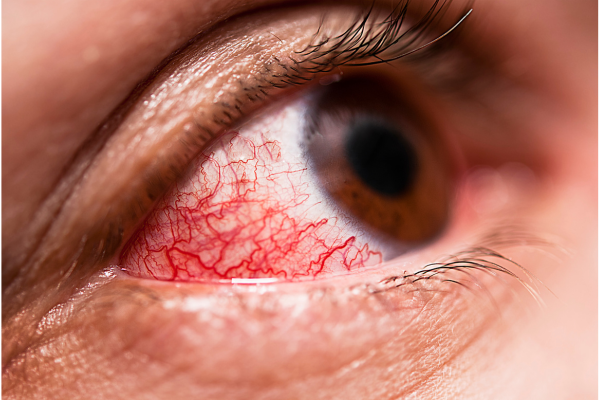Introduction
Conjunctivitis, often referred to as “pink eye,” is a common eye condition that can cause discomfort and irritation. Whether you’ve experienced it yourself or heard about it, understanding conjunctivitis is essential for maintaining eye health. In this article, we will explore the causes, symptoms, and treatment options for conjunctivitis, offering insights to help you recognize and address this eye concern.
What is Conjunctivitis?
Defining Conjunctivitis
Conjunctivitis is an inflammation of the conjunctiva, a thin, transparent layer covering the white part of the eye and the inner surface of the eyelids. This condition can affect one or both eyes and is commonly characterized by redness, itchiness, and discharge from the eyes.
Types of Conjunctivitis
- Viral Conjunctivitis: This type is caused by a viral infection and is highly contagious. It often presents with watery discharge and is typically associated with a cold or upper respiratory infection.
- Bacterial Conjunctivitis: Bacterial infections lead to this type of conjunctivitis, resulting in thick, yellow or green discharge. It can be easily spread through direct contact.
- Allergic Conjunctivitis: Triggered by allergens such as pollen or pet dander, allergic conjunctivitis causes itching, redness, and watery eyes. It is not contagious.
Causes of Conjunctivitis
Viral and Bacterial Infections
Viral and bacterial infections are common culprits behind conjunctivitis. Viral conjunctivitis is often associated with the same viruses that cause the common cold, while bacterial conjunctivitis can result from various bacteria strains.
Allergens
Allergic conjunctivitis occurs when the conjunctiva reacts to allergens like pollen, dust mites, or pet dander. This immune response leads to inflammation and uncomfortable symptoms.
Irritants
Exposure to irritants such as smoke, chemicals, or foreign objects can also lead to conjunctivitis. The eyes become red, itchy, and irritated as a protective response.
Symptoms of Conjunctivitis
- Redness and irritation of the eyes
- Watery or thick discharge
- Itchy or burning sensation
- Gritty feeling, as if something is in the eye
- Sensitivity to light
- Crusting of the eyelashes, especially in the morning
Treating Conjunctivitis
Viral Conjunctivitis
Viral conjunctivitis is usually self-limiting and resolves on its own within a few days. Applying a warm compress and using artificial tears can help soothe discomfort.
Bacterial Conjunctivitis
Bacterial conjunctivitis often requires antibiotic eye drops or ointments to clear the infection. It’s crucial to complete the full course of treatment to prevent recurrence.
Allergic Conjunctivitis
Avoiding allergens is key to managing allergic conjunctivitis. Over-the-counter antihistamine eye drops and cool compresses can provide relief from symptoms.
FAQs
- Is conjunctivitis contagious?Yes, viral and bacterial conjunctivitis are contagious and can spread through direct contact.
- Can conjunctivitis affect both eyes?Yes, conjunctivitis can affect one or both eyes, depending on the cause.
- Can I wear contact lenses with conjunctivitis?It’s best to avoid wearing contact lenses until the infection or inflammation clears to prevent further irritation.
- When should I see a doctor?If you experience severe eye pain, changes in vision, or symptoms that worsen after a few days, consult a doctor.
- Can conjunctivitis lead to vision loss?In most cases, conjunctivitis does not lead to permanent vision loss. However, prompt treatment is essential to prevent complications.
- How can I prevent conjunctivitis?Practicing good hygiene, avoiding close contact with infected individuals, and not sharing personal items can reduce the risk of conjunctivitis.
Dispelling the Myth: Eye Flu Transmission
Understanding Eye Flu
Eye Flu, or conjunctivitis, is an inflammation of the conjunctiva—a thin membrane covering the eye’s white part and the inner eyelids. While it is highly contagious, Eye Flu primarily spreads through direct contact with infected discharge, not solely through visual contact.
The Reality of Transmission
Contrary to the myth, Eye Flu doesn’t spread solely by looking into someone’s eyes. Direct contact with infected eye secretions, such as discharge from rubbing or touching the eyes, is the primary mode of transmission. The infection can also be transferred through shared items like towels, handkerchiefs, and eye makeup.
Conclusion
Conjunctivitis, commonly known as “pink eye,” is a widespread condition that can cause discomfort and irritation. By understanding its causes, symptoms, and treatment options, you can take proactive steps to manage and prevent conjunctivitis. If you suspect you have conjunctivitis or experience persistent symptoms, consult a healthcare professional for accurate diagnosis and guidance.

